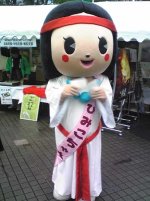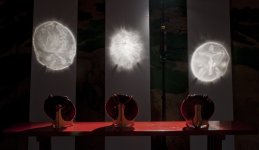repoman
Contributor
http://en.wikipedia.org/wiki/Himiko
http://www.archeolog-home.com/pages/content/makimuku-japon-over-100-postholes-dating-to-the-time-of-himiko.html
This is some cool stuff, I wonder if it is her temple. The dates seem to be right. There is nearby Kofun, massive keyhole shaped burial mound nearby. That will take Imperial permission, I think, to excavate. However, maybe she died just before Kofun were made or her tomb was the first Kofun.
Supposedly the 100 mirrors from China were magic mirrors which can reflect an image of the back forged pattern. This is not magic, but it seems like it.
http://www.greenshinto.com/wp/2014/01/31/himikos-magic-mirror/
The link below has a video that shows how they are made now, which probably is similar to then:
http://videos.howstuffworks.com/science-channel/30250-what-the-ancients-knew-the-magic-mirror-video.htm
39 mirrors where found in a tomb much further southwest on Kyushu. Basically, unless there is sometime convincing there is no reason to assume any temple or tomb has Himiko in it.
I would think that the people of that time were totally wowed by these mirrors, but some people probably saw through it.
This is the best guess as to what she looked like:

Well, once you de-anime...
http://www.archeolog-home.com/pages/content/makimuku-japon-over-100-postholes-dating-to-the-time-of-himiko.html
This is some cool stuff, I wonder if it is her temple. The dates seem to be right. There is nearby Kofun, massive keyhole shaped burial mound nearby. That will take Imperial permission, I think, to excavate. However, maybe she died just before Kofun were made or her tomb was the first Kofun.
Supposedly the 100 mirrors from China were magic mirrors which can reflect an image of the back forged pattern. This is not magic, but it seems like it.
http://www.greenshinto.com/wp/2014/01/31/himikos-magic-mirror/
The link below has a video that shows how they are made now, which probably is similar to then:
http://videos.howstuffworks.com/science-channel/30250-what-the-ancients-knew-the-magic-mirror-video.htm
39 mirrors where found in a tomb much further southwest on Kyushu. Basically, unless there is sometime convincing there is no reason to assume any temple or tomb has Himiko in it.
I would think that the people of that time were totally wowed by these mirrors, but some people probably saw through it.
This is the best guess as to what she looked like:

Well, once you de-anime...
Last edited:

